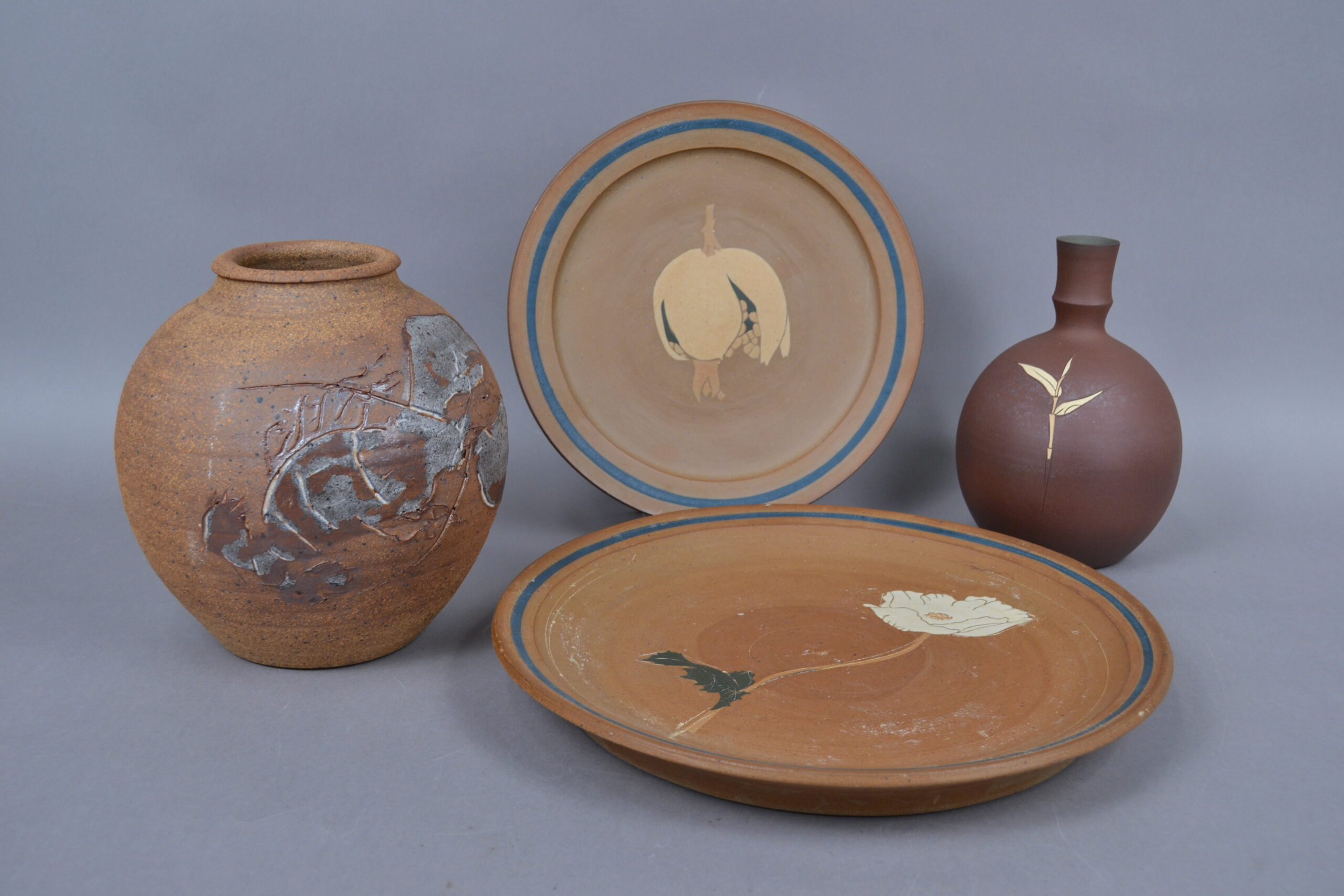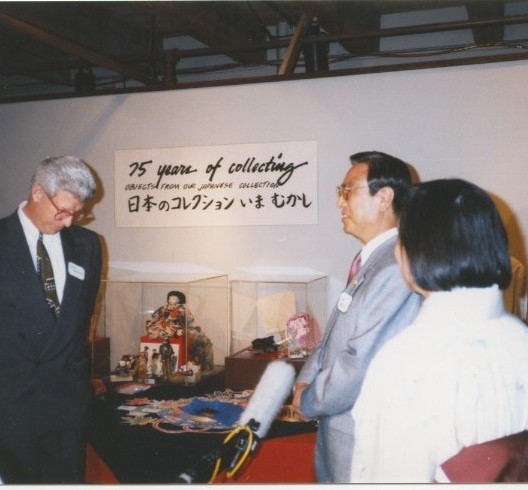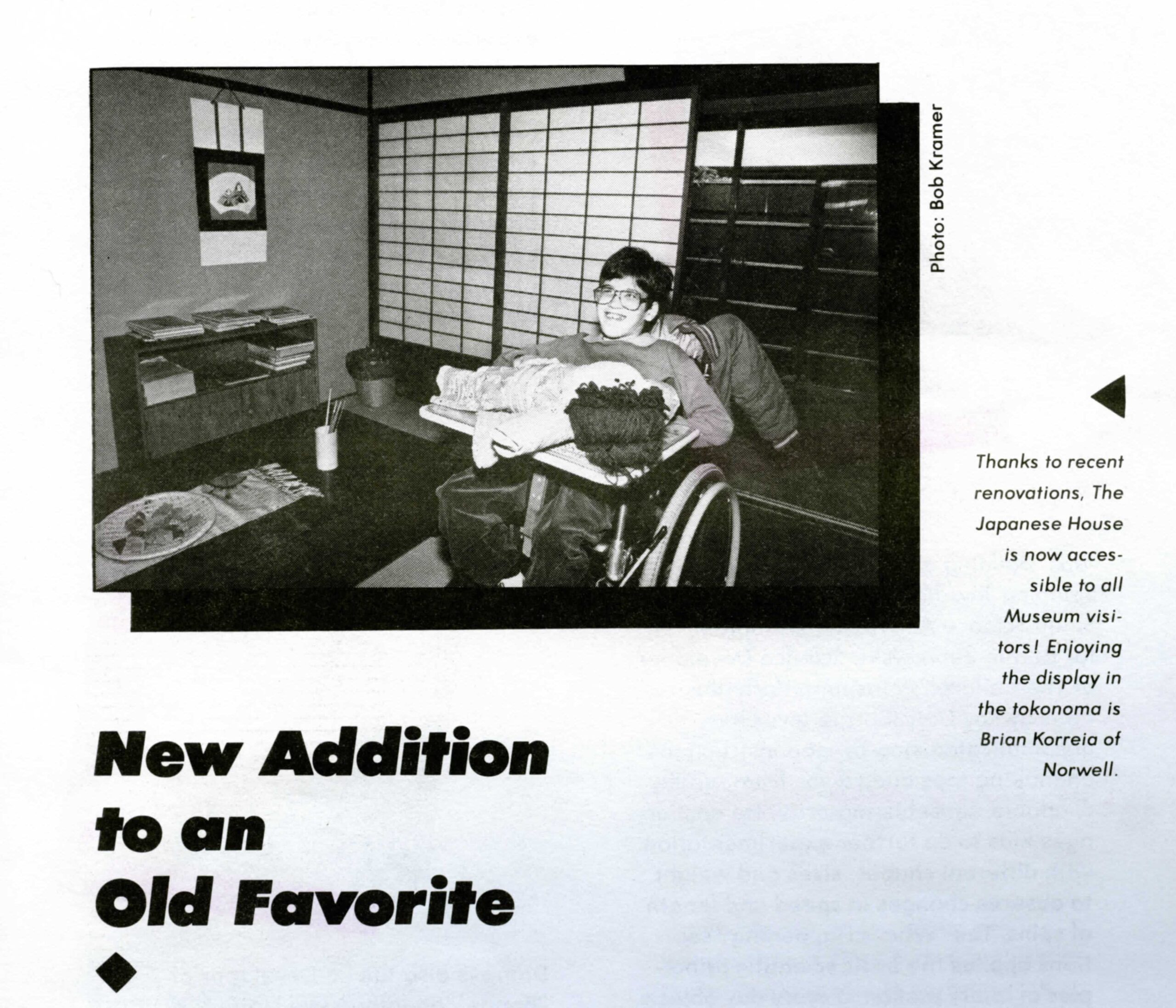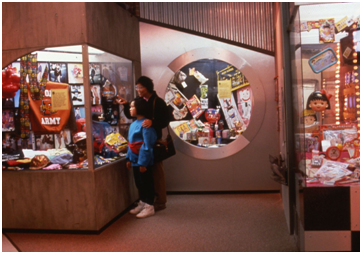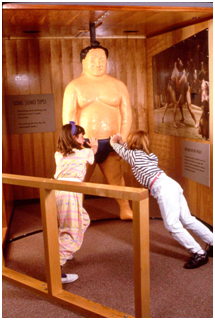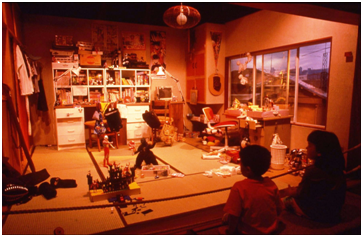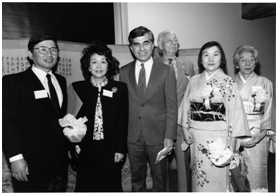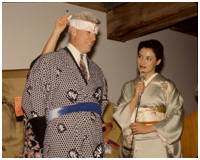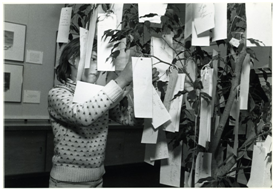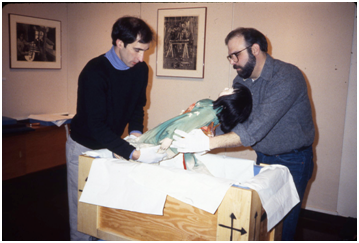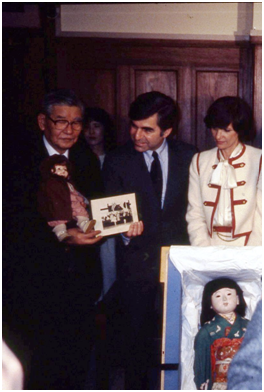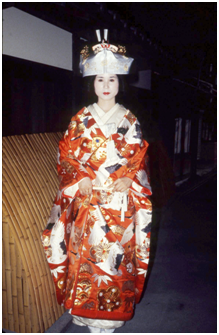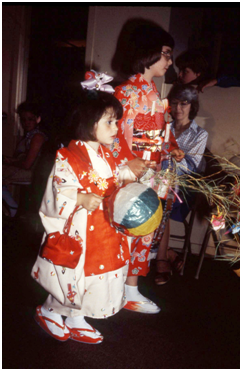History Timeline
Explore key moments in the history of teaching and learning about Japan at Boston Children’s Museum and about the installation of the Kyo no Machiya inside the Museum.
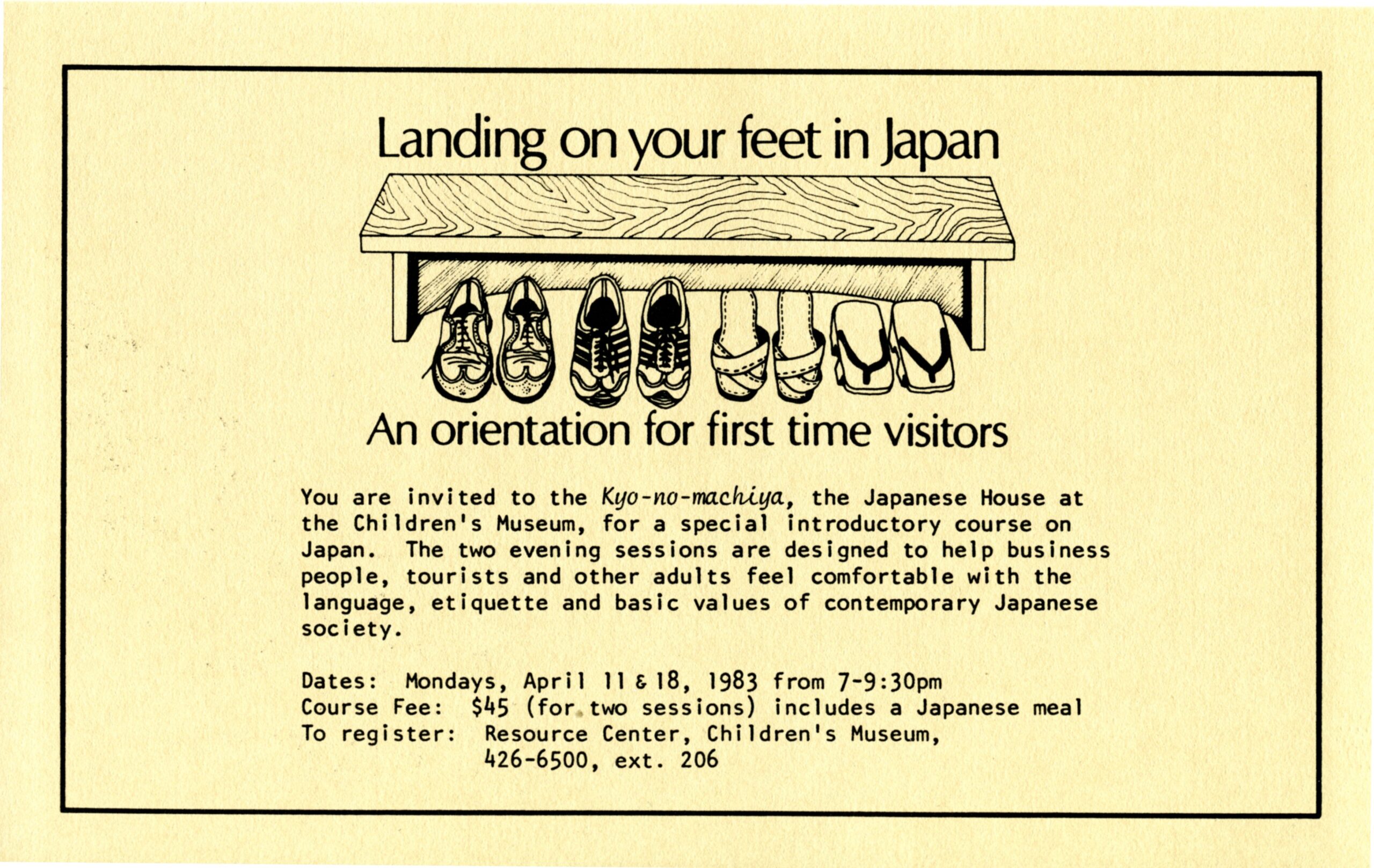
1980
In the 1980s, Japan’s heightened visibility, propelled by dynamic economic growth and international trade, created new demand for accurate and useful information. BCM’s Japan program staff offered educational workshops for teachers, students, business people, and others interested in learning about Japan.
FULL STORY >
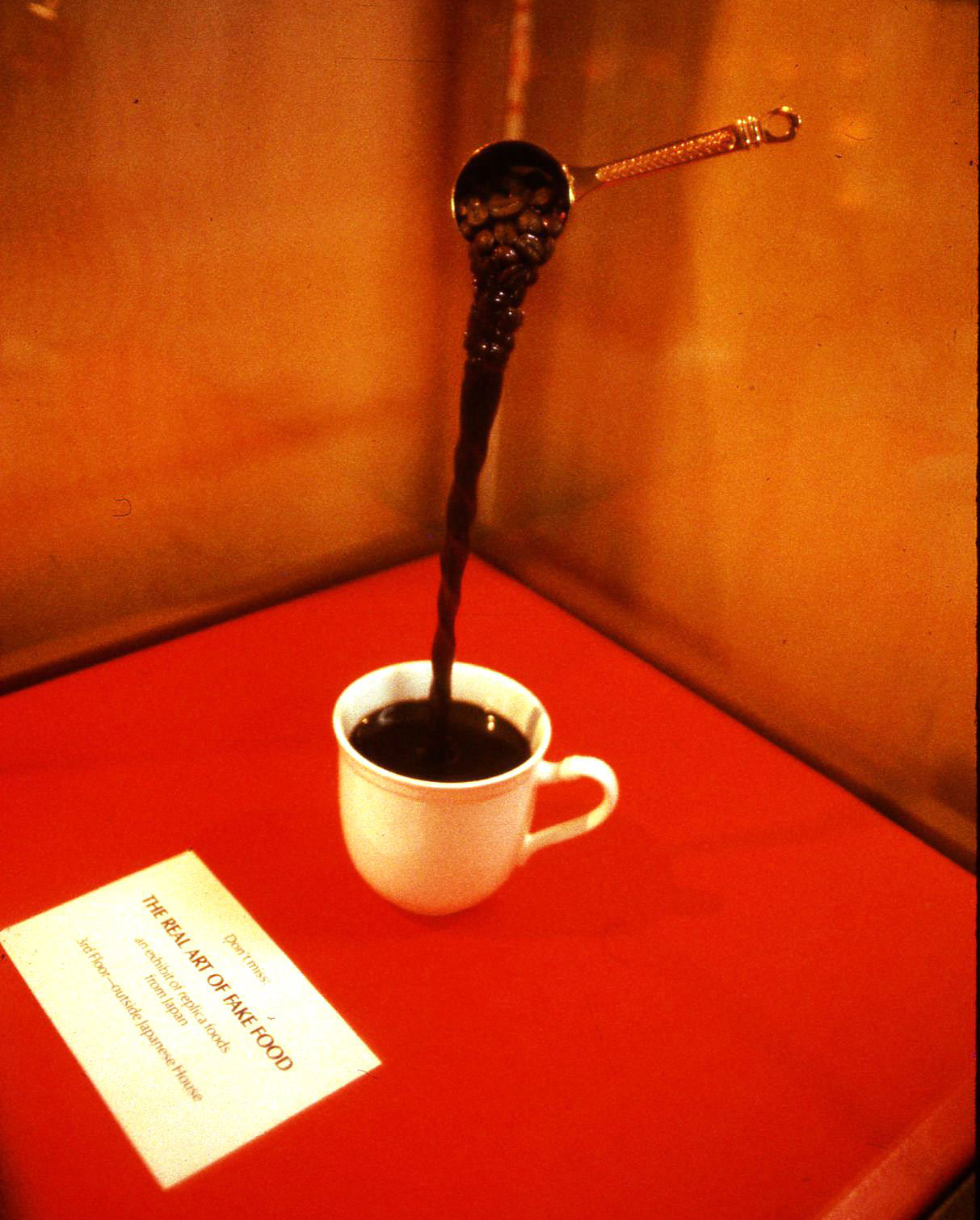
1984
The Real Art of Fake Food exhibit opened in the introductory space to the house. It showcased the Japanese art of replicating food for display at restaurants. The Iwaski Food Company produced all the replicas on display, including both Japanese and American foods.
FULL STORY >
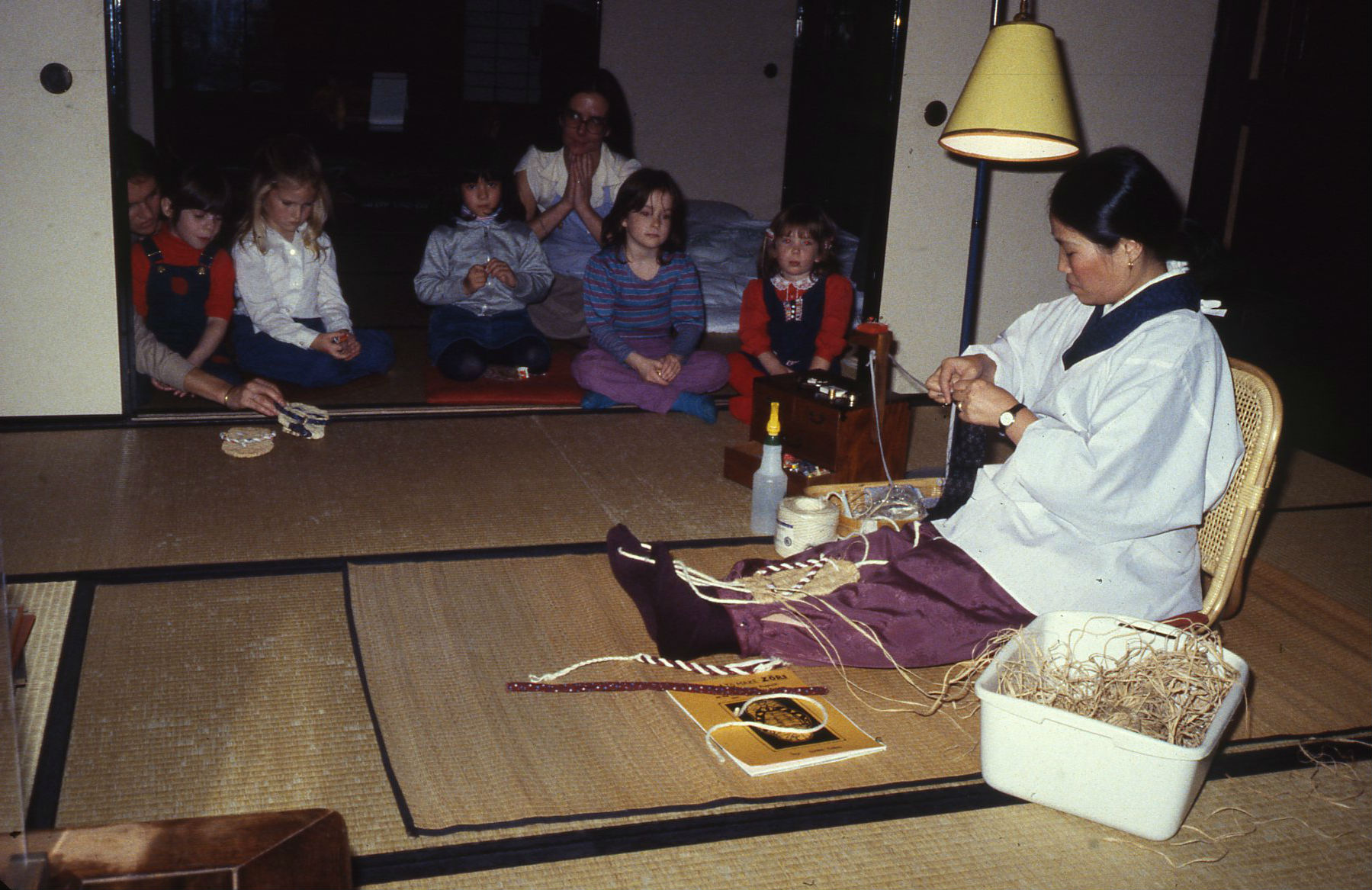
1984
A National Endowment for the Humanities Folk Arts grant enables BCM to bring 3 Japanese artists to the Museum to demonstrate and give workshops in zori, roketsu, and neriage.
FULL STORY >
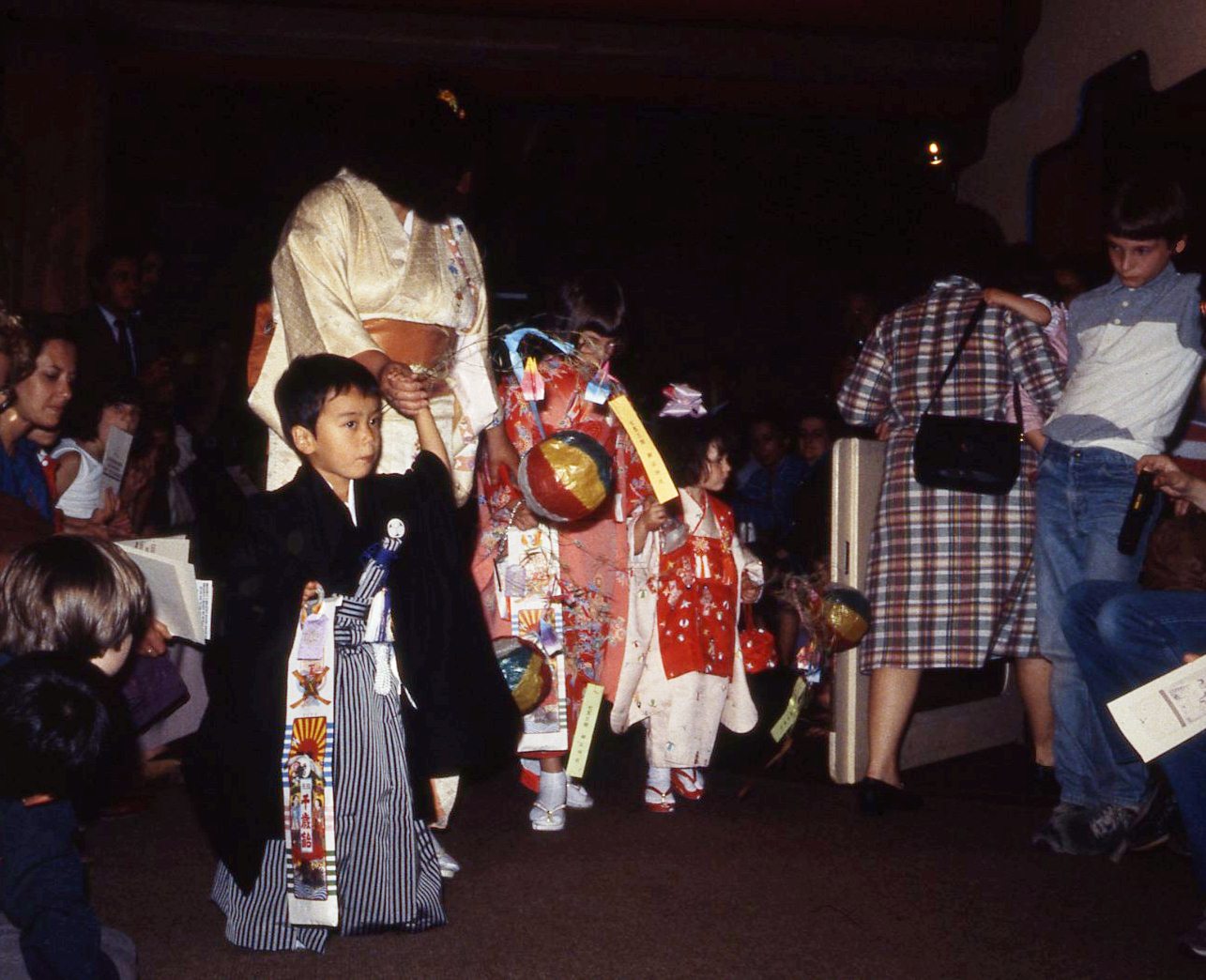
1984
Kimono night at the Museum, when the Juraku Company of Kyoto held a fashion show at the Museum, showing off the many types of kimono worn for various occasions.
FULL STORY >
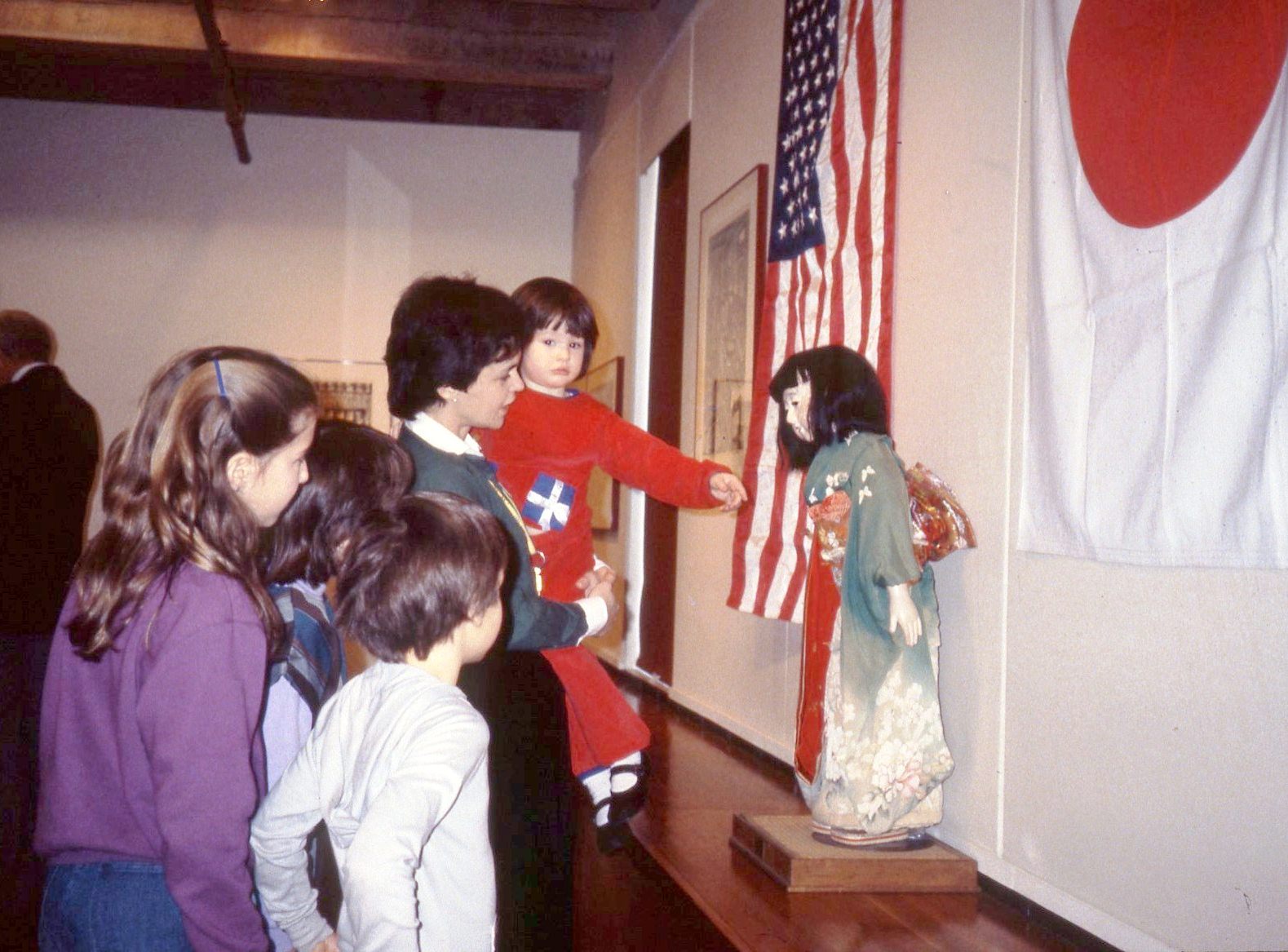
1984
A going-away party for Miss Kyoto, who needed to return to Japan for conservation, was held on Girls' Day. Visitors offered best wishes for her journey.
FULL STORY >
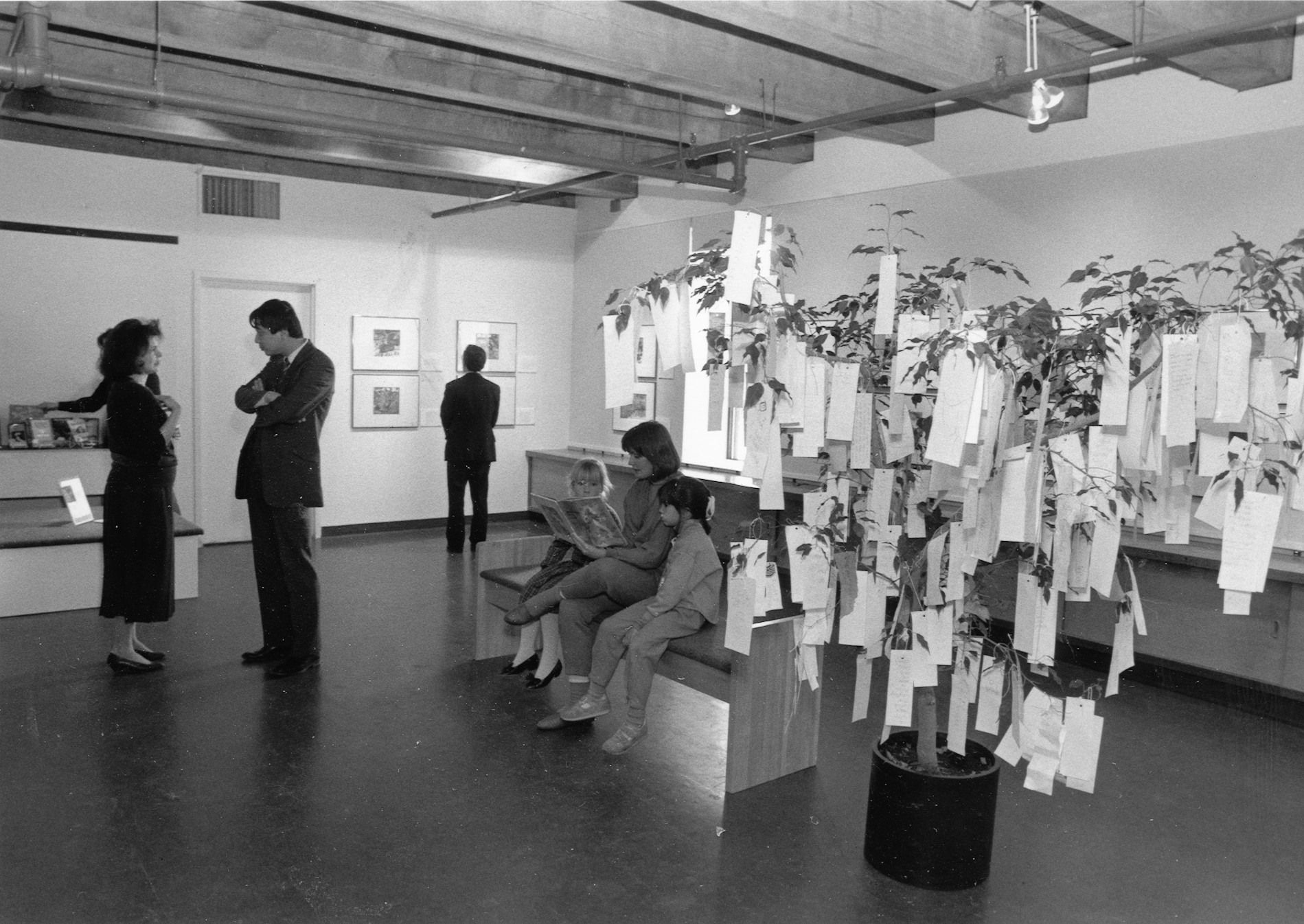
1988
An exhibition of the original drawings by artist Toshi Maruki for his book Hiroshima no Pika, the story of a family living in Hiroshima when the atom bomb was dropped, is installed based on BCM’s belief that it is important for a children’s museum to deal with difficult subjects.
FULL STORY >

1990
Shukuten, the 10th anniversary of The Japanese House, was celebrated with a ceremony honoring the many people who were responsible for bringing the house to Boston and announced the Oda Endowment for the Japan Program.
FULL STORY >
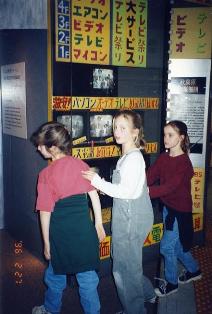
1988
Teen Tokyo: Youth and Popular Culture in Japan opened April 12, 1992. A highly popular exhibit about growing up in Tokyo and the international culture of youth, it focused on how Japanese and American youth share common interests in music, sports, and fashion, and on how cultures borrow from each other.
FULL STORY >

